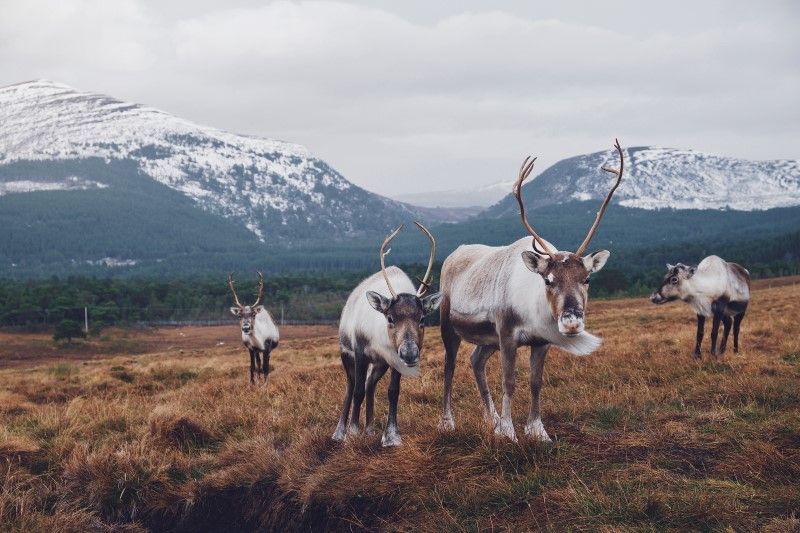You’d suppose, given that Rudolph is traditionally a boy’s name, that Rudolph the Red-nosed Reindeer is male (or a bull, as male reindeer are known) but one thing – in fact, two – suggest otherwise…
Girl power
Reindeer (Rangifer tarandus) are unique among deer species in that females, as well as males, grow antlers. Each year, both sexes grow a set of antlers, males beginning in February and females, in May. Reindeer have the largest antlers, compared to body size, of any deer, and antlers are costly to grow, so why bother?
For males, it’s about securing a group of females with which to mate, fending off the attentions of other males. Battles with rivals can go on for hours. The breeding season, or rut, begins at the end of September and ends in October or November. Most calves are born in May.
So why do female reindeer grow antlers? As an ecological rule of thumb, if it isn’t to do with sex, it’s probably to do with food. During the winter, when females are pregnant, reindeer feed mainly on lichen and scrape away patches of snow to expose it. Females use their antlers to dig and forage for food, and to defend these patches from other (male and female) reindeer, at a time when access to limited food is critical. Females with the largest antlers tend to be socially dominant and in the best physical condition.
Next sleigh delivery
And there’s the rub: males drop their antlers in late autumn or early winter, after the rut, while females keep theirs through the winter until after calving in spring. So, if Rudolph, Dasher, Dancer, Prancer, Vixen, Comet, Cupid, Donner and Blitzen have antlers on Christmas Eve, they’re likely to be female.
Unless… they’re what might be called reindeer ‘steers’ or castrated males. In fact, most of the reindeer used to pull sleds are castrated males as they’re more docile than bulls, and they have antler cycles similar to those of the females. It’s also true that not all females have antlers. In habitats where food is especially scarce, poor nutrition means that reindeer (like other deer) won’t grow antlers.
For the most part, however, Rudolph’s gender is academic: just so long as the presents are delivered by Christmas morning.

12 (actually, 29) reindeer roaming

Apart from the seasonal visits of Rudolph and company, wild reindeer haven’t lived in Britain for 8,000 years or so (there’s no evidence for the popular notion that they survived in Scotland until medieval times). The only free-ranging reindeer in Britain today are a privately-owned herd in the Cairngorms National Park established 70 years ago.
In 1952, Mikel Utsi, a Laplander from Sweden, brought 29 reindeer to the Rothiemurchus Forest area in the Highlands of Scotland, which reminded him of reindeer pastures in Lapland, down to the plentiful lichens on the ground, rocks and trees. Over the years, the herd has grown and today it’s maintained at between 130 and 150 individuals. Some of the animals tour the country at Christmas, but it’s possible to visit the herd at other times.
After all, as their website says, ‘reindeer are not just for Christmas.’
Get involved with our mammal watching surveys, Living with Mammals and Mammals on Roads today or visit our mammal fact files to learn more about British mammals:
Header image credit Marcus Lofvenberg
